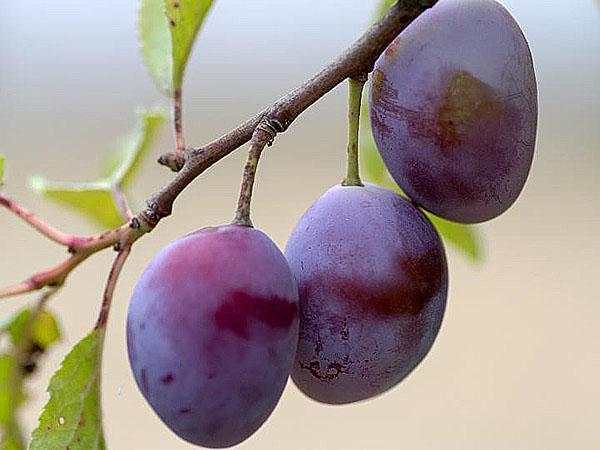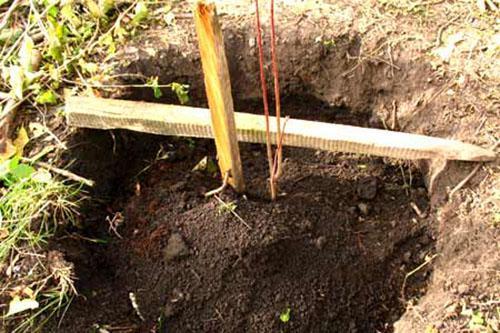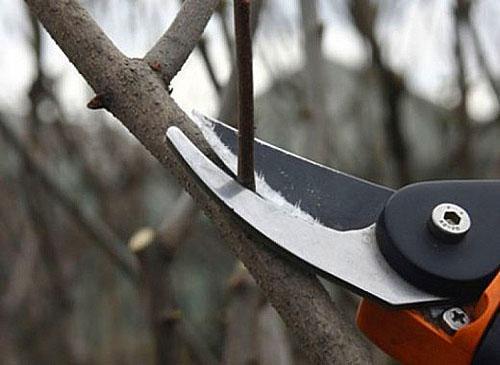Features of planting, growing and collecting plums in your garden - recommendations of foreign gardeners
 Plums are a good choice for beginner gardeners looking to grow fruit trees. They are perfectly adapted to the environment, are more compact and require less maintenance than other fruits. In addition to the taste of plums, their trees decorate your garden by themselves.
Plums are a good choice for beginner gardeners looking to grow fruit trees. They are perfectly adapted to the environment, are more compact and require less maintenance than other fruits. In addition to the taste of plums, their trees decorate your garden by themselves.
Plums, along with peaches and nectarines, are stone fruits.
Landing

It is also very important to choose the variety that will grow in your area. We will look at three types of plum trees:
- European;
- Japanese;
- hybrid.
The hardy European plum grows well in most parts of the United States. Japanese bears fruit where peach trees bloom. The Americans have developed hybrids that can grow in areas where European and Japanese plums do not survive.
Plant plums in a sunny area in well-drained, fertile soil. Avoid planting in low areas where the tree can suffer from frost damage. If possible, choose a location where the drain is sheltered from the wind from the south or west. This will help the fruit grow.
Seedlings grown in containers should be removed from the pot and with scissors remove the circular roots entangling the main ball of roots.
When planting grafted trees, the junction of the rootstock and scion should be at a height of about 3 cm from the ground.
Dig a hole 10 cm in diameter and 10 cm deeper than the root ball. Place the tree in the center of the hole and make a small mound around the trunk. Make sure the roots are spread out to the sides, but don't bend too much.
Place large trees at a distance of 6-7 meters from each other. Plant dwarf ones 4-6 meters away.
Care
 Pruning plum trees is important to prevent overweight from breaking. If this happens, cut off the damaged section of the branch completely. Ideally, it is better to cut it flush with the main branch.
Pruning plum trees is important to prevent overweight from breaking. If this happens, cut off the damaged section of the branch completely. Ideally, it is better to cut it flush with the main branch.
Water the young trees abundantly every week during the first growing season to encourage growth. Then switch to regular watering. It is best to moisten the soil near the trunk, let it dry, and then add more water.
 It is especially important to ensure good watering in mid-October to give the tree enough moisture for wintering.
It is especially important to ensure good watering in mid-October to give the tree enough moisture for wintering.
Do not fertilize young fruit trees until they are harvested. After that, fruit growth will require regular fertilization throughout the year. If large fruit growth is expected, add 450 g of calcium nitrate per tree. In autumn and winter, exclude nitrogen fertilization to avoid stimulating new growth during these seasons.
In the fall, rake up and discard all debris and debris
Prune in early spring or mid-summer to protect your plant from disease. Spring pruning is best for young plums and summer pruning for established ones. Never prune fruit trees in the fall or winter, as injured branches are easily infested.
 If you have problems with insect pests, then it makes sense to consider using insecticides.
If you have problems with insect pests, then it makes sense to consider using insecticides.
To protect the plum from winter damage (especially a young tree), build a fence around the stem. Also watch the condition of the bark at the bottom of the trunk. If there are signs of hares or mice, take care of the wire fence.
Pruning Japanese plum
 If you have a Japanese plum growing, it is best to make a mold with an open center. In the first summer, prune strong shoots to form a future crown of 2-3 branches. Check the tree in about a month. Once you have three equally spaced wide-angle branches, trim off the rest. This will give you master branches.
If you have a Japanese plum growing, it is best to make a mold with an open center. In the first summer, prune strong shoots to form a future crown of 2-3 branches. Check the tree in about a month. Once you have three equally spaced wide-angle branches, trim off the rest. This will give you master branches.
 In the second year, in early summer, cut the branches short in the middle of the tree and remove any sprouts developing under the three main branches. In the summer of the third year, cut off all the shoots in the center of the trunk to maintain the shape of the tree.
In the second year, in early summer, cut the branches short in the middle of the tree and remove any sprouts developing under the three main branches. In the summer of the third year, cut off all the shoots in the center of the trunk to maintain the shape of the tree.
 The Japanese plum needs a strong pruning to maintain and produce good fruit. It is also helpful to thin out the amount of fruit. Plums should grow 7-10 cm apart.
The Japanese plum needs a strong pruning to maintain and produce good fruit. It is also helpful to thin out the amount of fruit. Plums should grow 7-10 cm apart.
Pruning European plum
 For a European plum tree, it is best to choose the leader type of skeletal branch shape. With this pruning, the branches move away from the trunk every 12-20 cm, creating a spiral in which each new level of branches must be displaced vertically relative to the previous one.
For a European plum tree, it is best to choose the leader type of skeletal branch shape. With this pruning, the branches move away from the trunk every 12-20 cm, creating a spiral in which each new level of branches must be displaced vertically relative to the previous one.
Start this pruning at the beginning of the summer of the tree's first year. During this period, all shoots should be cut off within half a meter from the ground. The end result should feel like a Christmas tree.
The European plum does not require thinning because it does not produce as much fruit as the Japanese one. However, the distance between the plums should be about 5 cm on each branch.
For effective pest and disease control, remember to prune your fruit trees. You can use mulch to fight against weeds in the spring, but remember to remove it in late fall so it doesn't harbor parasites in the winter. It is also helpful to loosen the soil around the trunk a little in late spring to look for potential pests.
Pests and diseases
Plums can be attacked by the following ailments and parasites:
- milky shine;
- tinder fungus;
- bacterial cancer;
- pocket disease;
- Japanese beetles;
- water lily aphid;
- plum moth.
Collection and storage
 For the best flavor, let the crop ripen on the tree. You can check the readiness by lightly pressing on the walls of the drain. If the skin is soft to the touch, then it's time to harvest the fruits. The fruit should be free to separate from the branches with a gentle twist.
For the best flavor, let the crop ripen on the tree. You can check the readiness by lightly pressing on the walls of the drain. If the skin is soft to the touch, then it's time to harvest the fruits. The fruit should be free to separate from the branches with a gentle twist.
Unfortunately, plums are not stored for a long time, so it is better to eat them immediately or canned. You can also harvest the fruits a little earlier, while they are still strong, and leave to ripen in a cool place.
It is best to store plums in the refrigerator at 0 ° C and around 90-95% humidity. Under these conditions, the fruit will not spoil for 2-4 weeks.
Plums make delicious jam or jelly. They can also be frozen or dried (then prunes will turn out).
Recommended varieties
 For Japanese plums, try Satsuma. It produces large, dark red fruits. They taste very sweet and are well suited for fresh consumption and canning.
For Japanese plums, try Satsuma. It produces large, dark red fruits. They taste very sweet and are well suited for fresh consumption and canning.
 An excellent variety of European plum is "Stanley". It is common in the eastern and northwestern regions of the United States. This self-fertile plum tree does not require pollinators and produces medium-sized but very tasty fruits.
An excellent variety of European plum is "Stanley". It is common in the eastern and northwestern regions of the United States. This self-fertile plum tree does not require pollinators and produces medium-sized but very tasty fruits.
 Among the American hybrids, the "Alderman" and "Superior" should be noted. They combine the taste of Japanese plums with the hardiness of European varieties. Great for regions with variable weather.
Among the American hybrids, the "Alderman" and "Superior" should be noted. They combine the taste of Japanese plums with the hardiness of European varieties. Great for regions with variable weather.